Vitamins are often classified based on their solubility. Most dissolve in water and are called water-soluble vitamins . In contrast, there are only four fat-soluble vitamins because they dissolve in oil.
The B complex vitamins are soluble in water and are found in the diet. They are as follows:
- Vitamin B1 (thiamine)
- Vitamin B2 (riboflavin)
- Vitamin B3 (niacin)
- Vitamin B5 (pantothenic acid)
- Vitamin B6 (pyridoxine)
- Vitamin B7 (biotin)
- Vitamin B9 (folate)
- Vitamin B12 (cobalamin)
Unlike fat-soluble vitamins, water-soluble vitamins are generally not stored in the body. For this reason, you should try to get them regularly through diet.
Discover the guide to the 8 water-soluble vitamins of the complex , how they work, dietary sources, the recommended intake and their possible side effects.

Definitive guide to water soluble vitamins
1. Vitamin B1 or Thiamine
1.1 Function
Like other B vitamins, thiamine serves as a coenzyme in the body. Coenzymes are small compounds that help enzymes trigger chemical reactions that would not otherwise occur on their own. It helps to convert nutrients into energy and to form sugar.
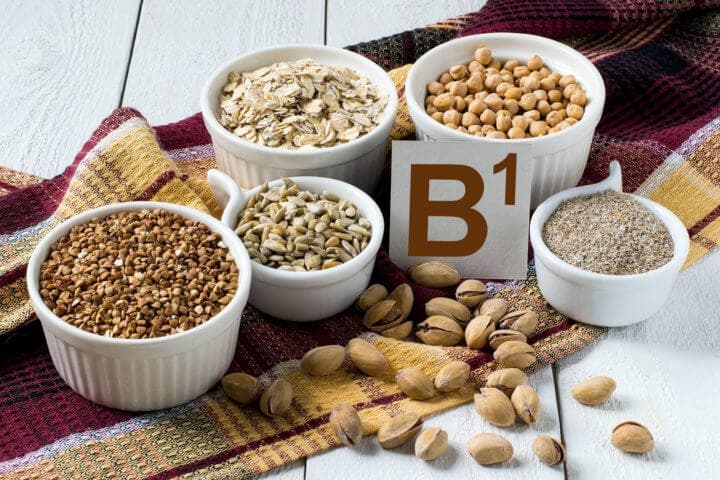
1.2 Sources and recommended intake
The richest dietary sources of thiamine include nuts, seeds, whole grains, liver, and pork. In contrast, fruits, vegetables, and dairy products generally don't provide much thiamine.
The recommended daily intake ranges from 1 to 1.2 milligrams (mg) for adults.
1.3 Deficiency and side effects
Deficiency is rare, but high blood sugar can increase thiamine excretion through the urine, raising the risk of deficiency. In fact, thiamine levels can be lowered by 75-76% in people with type 1 and type 2 diabetes.
People with alcohol problems are also at higher risk of lacking this type of vitamin. There are no reports of adverse effects from ingesting high amounts of thiamine from food or supplements.
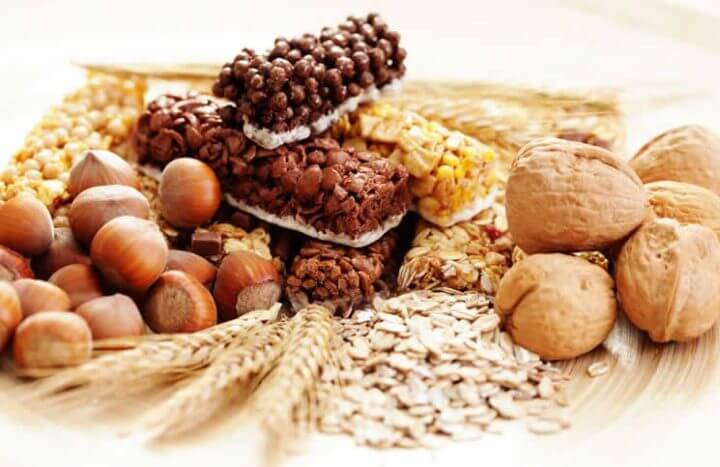
2. Vitamin B2 or Riboflavin
2.1 Function
Riboflavin is the only water-soluble vitamin used as a food coloring . It is involved in the conversion of nutrients into energy. It is also necessary for the conversion of vitamin B6 to its active form, and in the transformation of tryptophan into niacin.
2.2 Source and intake
Good sources of riboflavin include eggs, broccoli, milk, legumes, mushrooms, and meat. Also yeast extract is exceptionally rich in riboflavin. Intake for adults ranges from 1 to 1.3 milligrams.
2.3 Deficiency and side effects
Riboflavin deficiency is very rare in developed countries. However, a poor diet, old age, lung disease, and alcoholism can increase your risk.
The deficiency can lead to a condition known as arriboflavinosis, a condition characterized by a sore throat, swollen tongue, anemia, and skin problems. On the other hand, high intake of riboflavin through diet or supplements has no known effects.

3. Vitamin B3 or Niacin
3.1 Function
Niacin, also known as vitamin B3, is the only B vitamin that the body can make from another nutrient, the amino acid tryptophan. It plays an essential role in cell function and acts as an antioxidant.
Another important function is to drive a metabolic process known as glycolysis, the extraction of energy from glucose.

3.2 Sources and intake
Niacin is found in both plants and animals. Yeast extract is rich in niacin, providing around 128 mg per 100 grams. Other sources include fish, chicken, eggs, dairy products, and mushrooms.
Scientists have estimated that 60 mg of tryptophan can be used to create 1 mg of niacin. A daily intake of 30 mg is recommended for adults.
3.4 Deficiencies and side effects
Niacin deficiency is known as pellagra , and it is rare in developed countries. The main symptoms include inflammation of the skin, diarrhea, insomnia, and dementia.
Niacin of natural origin from food does not appear to have any adverse effects. However, high doses can cause nausea, vomiting, stomach irritation, insulin resistance, and liver damage.

4. Vitamin B5
4.1 Function
It is required for the formation of coenzyme A, necessary for the synthesis of fatty acids, amino acids and neurotransmitters.
4.2 Sources and intake
It is found in yeast, kidney, chicken, beef, grain, broccoli, and egg yolk extract. An intake of 5 mg per day is recommended for adults.
4.3 Deficiency and side effects
This vitamin is so widespread in food that its deficiency is practically unknown. However, its deficiency can cause irritability, sleep disturbances, restlessness and digestive problems. It does not appear to have any adverse effects at high doses.
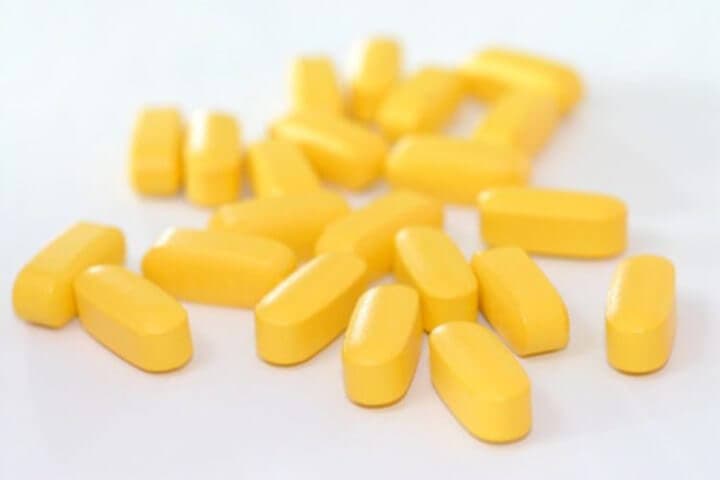
5. Vitamin B6
Vitamin B6 is a group of nutrients necessary for the synthesis of pyridoxal phosphate , a coenzyme involved in more than 100 different metabolic processes.
5.1 Function
It is involved in the formation of red blood cells, as well as in energy and amino acid metabolism. It is also required for the release of glucose from glycogen, the molecule the body uses to store carbohydrates.
5.2 Sources and intake
It is present in a wide variety of foods such as tuna, pork, turkey, bananas, chickpeas, and potatoes. Its availability is greater in foods of animal origin. A daily intake of 80 to 100 mg is suggested in adults.
to. Deficiency and side effects
Vitamin B6 deficiency is rare, but people with alcohol problems are at the highest risk. The main symptoms are anemia, skin rashes, seizures, confusion, and depression.
Vitamin B6 from food does not appear to have any adverse effects. However, very large doses are associated with sensory nerve damage and skin lesions.
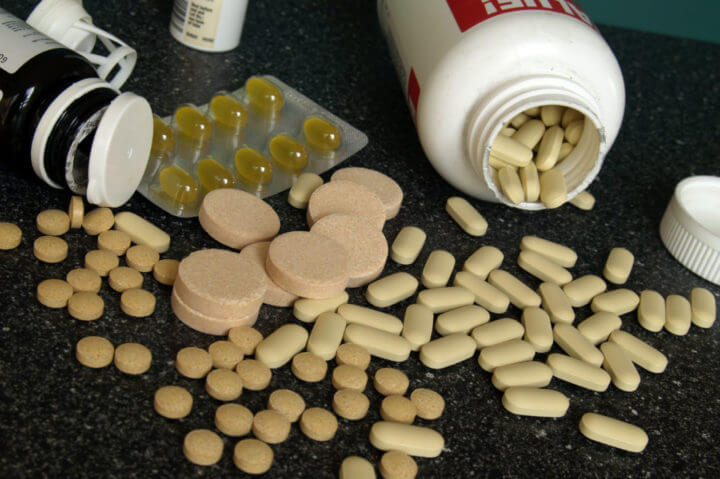
6. Vitamin B7 or Biotin
6.1 Function
It is required for carboxylases , enzymes involved in several fundamental metabolic processes. For example, biotin plays an essential role in the synthesis of fatty acids, the formation of glucose, and the metabolism of amino acids.
6.2 Sources and intake
Biotin-rich animal foods include organ meats, fish, meat, egg yolks, and dairy products. It can also be found in legumes, green vegetables, cauliflower, mushrooms, and nuts.
The gut microbiota also produces small amounts of biotin. A daily intake of 30 micrograms (mcg) per day is recommended for adults.
6.3 Deficiency and side effects
Deficiency is relatively rare. The risk is higher in babies fed low-biotin formula and people taking antiepileptic drugs.
Untreated deficiency can cause neurological symptoms, mental retardation, and loss of muscle coordination. It has no known adverse effects and the tolerable upper limit has not been established.
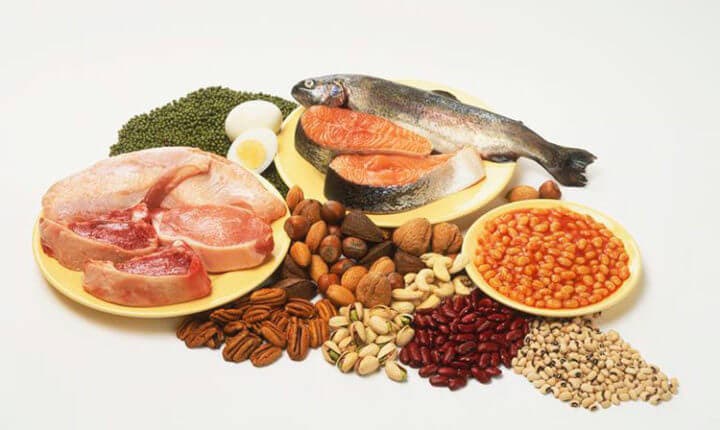
7. Vitamin B9 or Folate
7.1 Function
Folate acts as a coenzyme and is essential for cell growth, DNA formation, and amino acid metabolism. It is very important during periods of rapid cell division and growth, such as in infancy and pregnancy. In addition, it is required for the formation of red and white blood cells, so its deficiency can cause anemia.
7.2 Sources and intake
The best sources of folate include green leafy vegetables, legumes, sunflower seeds, and asparagus. Yeast extract can provide around 3,786 mcg per 100 grams.
A daily intake of 1000 mcg of folate is recommended for adults .
7.3 Deficiency and side effects
Folate deficiency is rare, but anemia is one of the classic symptoms of a lack of vitamin B9 . It can also lead to birth defects of the brain and neural tube.
No serious adverse effects have been reported from high vitamin B9 intake, but at high doses it can mask vitamin B12 deficiency .

8. Vitamin B12
It is the only vitamin that contains a metallic element, cobalt.
8.1 Function
Adequate intake helps to maintain the function and development of the brain and the production of red blood cells. It is also necessary to convert protein and fat into energy .
8.2 Sources and intake
Animal foods are virtually the only dietary sources of vitamin B12. These include meat, dairy, seafood, and eggs. It is recommended that adults consume 2.4 mcg per day.
8.1 Deficiency and side effects
Those most at risk for deficiency are those who never or rarely consume animal foods, such as vegetarians and vegans. It can also develop in older people.
Deficiency can cause various health problems, such as anemia, loss of appetite, neurological problems, and dementia. On the other hand, no adverse effects have been related to high vitamin B12 intake in healthy people.
We leave you the best offers of vitamin B complex supplements
Reference
- Arnarson, A. The Water-Soluble Vitamins: C and B Complex. For Healthline [Revised December 2017]
